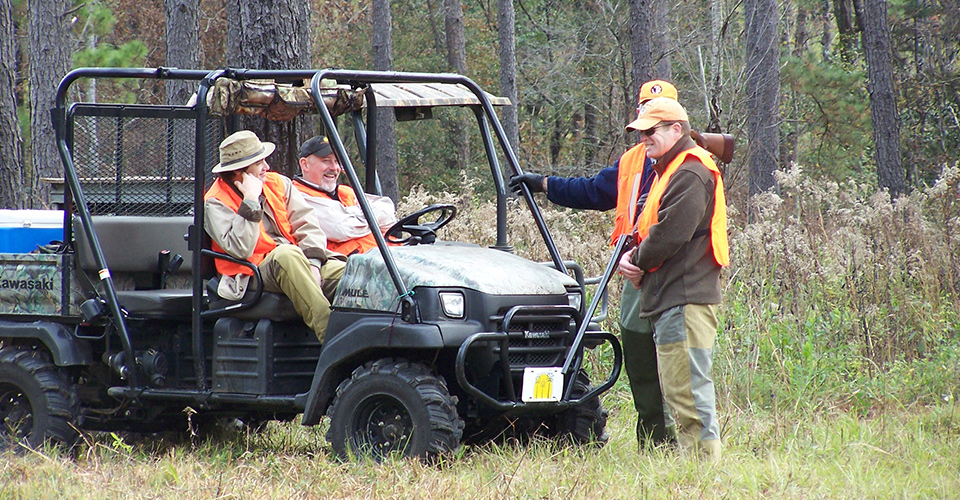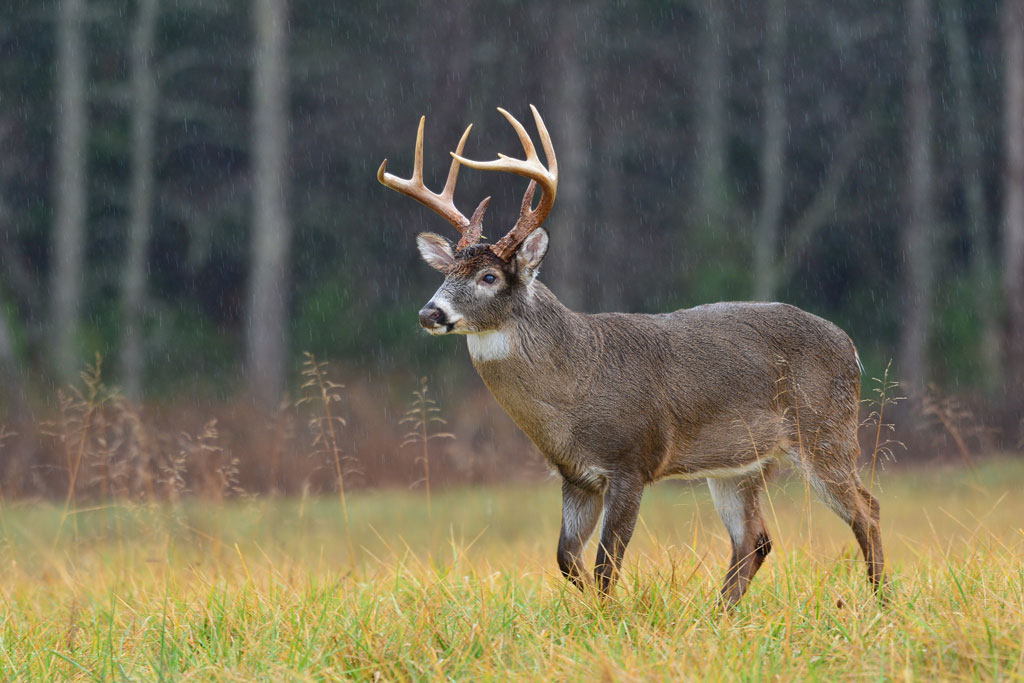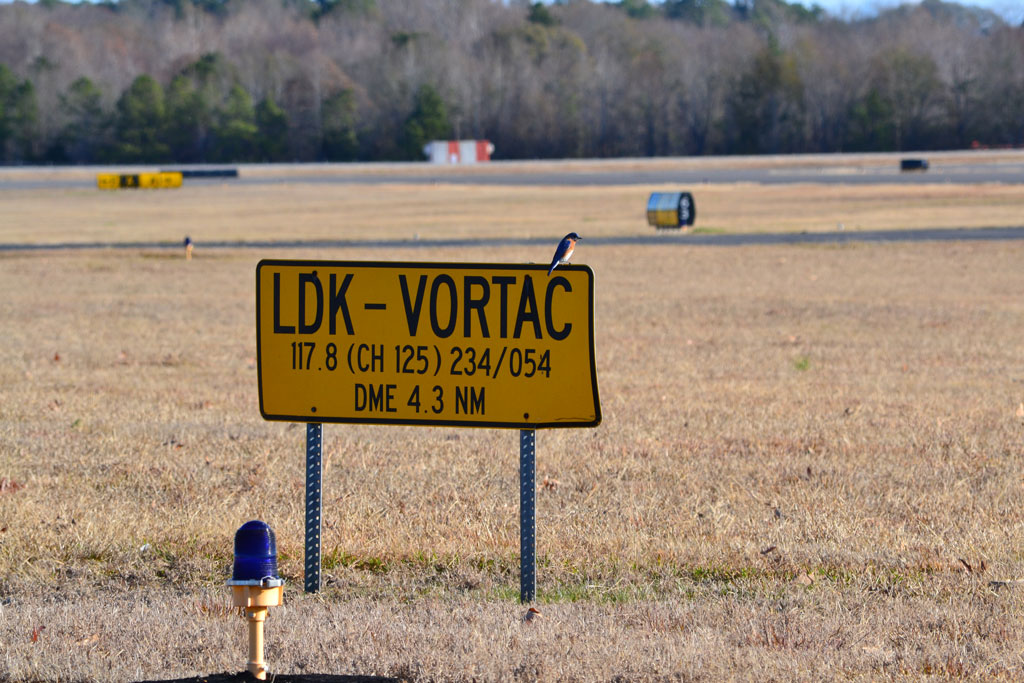By understanding the needs of clients, our staff can customize and implement management plans that meet financial, recreation, aesthetic, and conservation goals. For example, when the abundance and/or distribution of wildlife poses a significant risk to the human health and safety, WEA biologists provide quantitative analysis of the risk and mitigation strategies to reduce that risk.

Recreational Lease Management
Many landowners seek to maximize revenue on their holdings through the management of multiple streams of revenue. A major source of supplemental (or primary) revenue for many landowners is through recreational leases. Recreational leases most often include hunting and fishing opportunities, but can also provide opportunities for non-consumptive recreation activities like camping, ATV and horseback riding, hiking, and birdwatching. Some areas might be eligible for state and federal programs, which can increase attractiveness (i.e., value) through the ability to perform wildlife management activities on the lease. In addition to revenue, many recreational lessees provide access control and minimize illegal trespass issues, inform landowners immediately of issues that arise (e.g., arson, illegal harvests, trash dumping, bug spots, criminal activities), take pride and ownership in their lease, and promote a positive stewardship message to others in the community.
The complementary nature of recreational leases and many forest and land management plans can provide substantial annual profit to landowners over extended periods. Forestland in particular provides significant opportunities for landowners to establish high-quality recreational lease without compromising the value of timber and non-timber assets. WEA provides years of extensive experience in the administration and management of recreational leases, including proven methods for maximizing revenues and profits. We understand that an effective leasing program must be customer focused and revenue driven. This experience includes administering individual leases for a single landowner or an entire hunting club lease program across multiple states and ecoregions.
Lease Evaluation, Administration, and Pricing
WEA can evaluate recreational leasing opportunities within any size landbase. Administering individual leases or an entire leasing program is also a service offered by WEA. We can develop an Internet-based system for your outdoor recreation business such that current customers can administer their leases on-line. Potential customers can find available leases, view location maps, and bid or apply for a new lease on-line.
Communication with the lessees is imperative to a successful leasing program. A lessee or hunting club that feels informed becomes increasingly more loyal to the particular tract of land. This can be accomplished by hunting club dinners, Q&A sessions, food plot seed giveaways, newsletters, specific lease information (i.e. notifications of herbicide applications, harvest and thinning operations, site preparation activities, planting schedules, etc.). The relationships that are developed with the clubs, adjacent landowners, and law enforcement officers often work to preempt liability issues that might arise.
WEA also excels in the development of comprehensive pricing models and long-term pricing strategies for recreational leases. We work with landowners to develop a transparent value scoring system based on lease specifics and amenities to determine each minimum lease price. Through the segmentation of leases in this manner, landowners can utilize the value the market is willing to bear for each individual lease. These plans are customizable to each client and can include provisions for liability insurance, non-consumptive uses, and alternative incomes.
Lease Wildlife Habitat and Population Guidance and Management
WEA provides a suite wildlife habitat and population management services for hunting clubs. Through site visits, meetings, and phone consultations, WEA biologists can assist clubs with these game management issues and alleviate landowners of the headaches often associated with managing a leasing program.
Additionally, WEA can assist landowners with developing partnerships with various conservation/hunting organizations (e.g., the National Deer Association, Nature Conservancy, Mossy Oak, National Wild Turkey Federation, Ducks Unlimited, state natural heritage associations, etc.) to provide additional value to the lease program through products and management assistance. These partnerships also often provide landowners exposure and positive public perception while maintaining a “social license” for operations.
Lease Market Analysis and Customer Demographic Surveys
The key component to leasing land is understanding the status and maturity of the lease market. Establishing accurate recreation and hunting lease prices for a tract of land is often difficult, but always crucial to the success of any outdoor recreation program. WEA operates annual price analyses for over 16 million acres throughout the Southeast. The reports developed from these analyses provide clients with the data necessary to accurately determine the market value of their leases. Understanding market demand and fair value allows WEA clients to construct pricing strategies that best fit their goals, whether they be to maximize profit, increase customer retention or something different. WEA’s experience conducting lease market surveys, customer demographic studies, and structuring leasing programs to take advantage of this information is a valuable service that has been extensively used by clients.

Hunting Club Cooperatives
A major challenge facing many hunting clubs is the ability to manage their deer herd on a relatively small acreage. WEA has coordinated the formation of hunting club cooperatives which offer a collaborative mechanism to solve this problem. Cooperatives are comprised of numerous smaller clubs that together have the ability to manage and control a significant acreage of contiguous land. These individual clubs use the same harvest strategy (i.e. protecting young bucks) across the entire ownership or leased area to meet mutual management goals. This often alleviates the fear expressed by many club members that “if I let that young buck walk, the neighboring club will shoot it.” Hunting club cooperatives have been developed across the south and are reaping the benefits of their cooperative efforts. WEA can work on behalf of an individual or multiple clubs and landowners to foster productive working and collaborative relationships that meet mutually beneficial goals.
Lessee and Hunting Club Seminars and Training
Hunting club seminars are designed to “give” something back to your outdoor recreation customers. These seminars normally involve educational presentations, (i.e., food plots, quality deer management, multi-species management, etc.) a question and answer session, and a meal. We often provide a guest speaker from the local game and fish department or conservation department. This meeting can also be timed and associated with food plot seed giveaways. They are an excellent way to build trust through communication and have informal discussions with club members in a relaxed setting.

Wildlife Population Management
The second major component to wildlife management, is the direct and active management of the species populations. Using quantitative and qualitative methodologies, WEA can determine existing population sizes and metrics, develop plans for the management of each species to client objectives, and provide strategies for managing the wildlife resource in the future.
Population Surveys and Assessments
Before an intensive wildlife management program can be initiated the manager needs to know the existing or baseline population. Wiregrass Ecological Associates conducts wildlife population evaluations using the biological sampling methods, harvest data analysis, current camera technology, and other widely accepted techniques. For example, WEA can direct turkey brood surveys, fall bobwhite quail covey counts, and deer spotlight counts. WEA also specializes in non-game population surveys including gopher tortoise surveys, small-mammal trapping, various herptofauna population surveys, anuran call surveys, and bird point counts. Specific population demographic data can also be useful depending on research or management objectives. For instance, in white-tailed deer populations, it is important to know more specific information about your deer herd such as buck : doe ratio, fawn recruitment, and age structure. This data is essential if quality deer management (QDM) is an objective.
Harvest Data Analysis
Collecting and analyzing harvest data is a key component to developing a comprehensive population management strategy. However, instructing and convincing hunting clubs to adopt harvest data collection strategies is often difficult. WEA can work with clubs to ensure that the proper methods are used and data is collected by club members. WEA can then analyze the harvest data and provide management recommendations based upon the goals and objectives of each club.
Population Management Plans
When developing any management plan, WEA focuses on the objectives and constraints of our clients. WEA biologists are capable of developing wildlife game management plans for white-tailed deer, turkey, dove, quail, waterfowl, and numerous small game species. Our staff also has extensive experience developing and implementing conservation-based management plans for a variety of non-game and rare species. WEA often incorporates revenue generation, habitat management, and recreational opportunity considerations into the customized plans our clients request. For example, our clients’ goals for white-tailed deer population plans might range from trophy-buck and Quality Deer Management Association (QDMA) standards to creating opportunities to see the most deer possible for aesthetic reasons. As with all management plans produced at WEA, our population management plans include a feedback loop which allows each plan to be flexible and adaptive to changing constraints and objectives.

Wildlife Hazard Risk Mitigation
Wildlife strikes with aircraft have been occurring since the invention of the airplane and pose a significant threat to the operation and function of both aircraft and airports. On January 15, 2009 the emergency forced landing of US Airways Flight 1549 in the Hudson River brought significant media and public attention to the threat of wildlife strikes to aircraft. The ingestion of migratory Canada geese into both engines of the Airbus 320 drew national attention upon the dangerous, yet manageable, risks associated with wildlife strikes. These strikes can result in not only financial impacts from aircraft damage and downtime, but also human injuries and death. Therefore, the FAA now requires all Part-139 airports to complete a Wildlife Hazard Assessment (WHA) and encourages the completion from all general aviation airports. WEA staff has experience evaluating and mitigating these hazards for airports under the direction of our Federal Aviation Administration (FAA) qualified airport wildlife biologist (QAWB). More specifically, WEA provides the following services:
Wildlife Hazard Assessment (WHA)
Pursuant to Code of Federal Regulations (CFR) Title 14 Part 139.337, airports “must take immediate action to alleviate wildlife hazards whenever they are detected” and “ensure that a wildlife hazard assessment is conducted when” such triggering events occur. As defined by 14 CFR Part 133.337c and FAA Advisory Circular (AC) 150/5200-36A, a WHA must conducted by a “FAA qualified airport wildlife biologist (QAWB).
A WHA is an ecological and scientific study acceptable to the FAA for the evaluation of potential wildlife hazard risk to aircraft and recommendations to mitigate that risk. Based on the findings of the WHA, best management practices (BMPs) are recommend to mitigate the occurrence and severity of wildlife strikes, including the development or update of a Wildlife Hazard Management Plan (WHMP). WEA has the qualifications, experience and expertise to design and complete a WHA on any-size airport that meets the standards established by the FAA.
Wildlife Hazard Management Plans (WHMP)
A WHMP provides the foundation for each airport to address wildlife hazards based on the most recent information available. Using the results of a WHA, the WHMP addresses the airport specific actions required to mitigate the risk of wildlife strikes on or near the airport. WEA insures this operational guide should be developed and integrated with other operational guidelines and plans specific to each airport. WEA considers the review and update of WHMP most effective when an adaptive management approach is utilized.
Training
Airport staff that perform wildlife harassment and abatement measures to mitigate the risk of strikes require recurrent annual training. WEA offers this training to meet FAA standards and address safety, techniques for pyrotechnic use, review and updates to the WHMP, and adaptive management techniques.